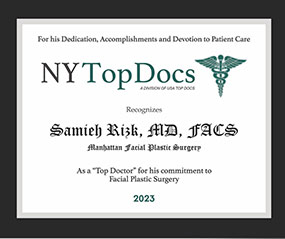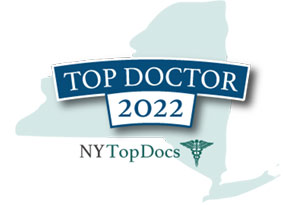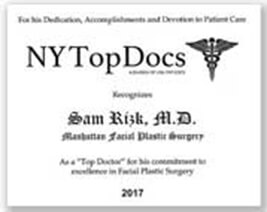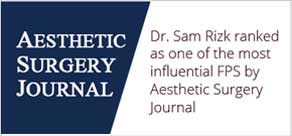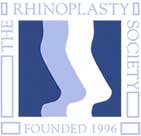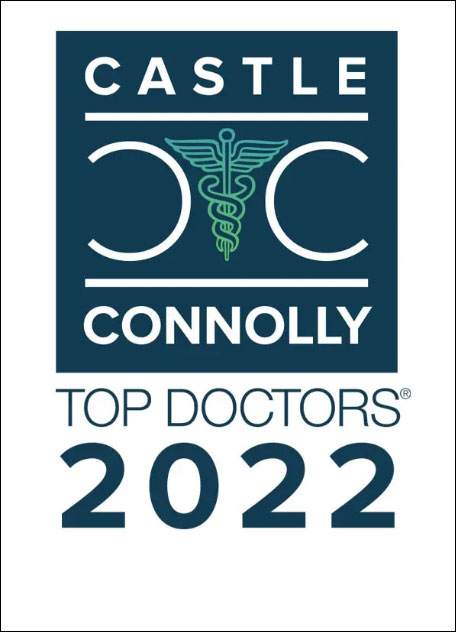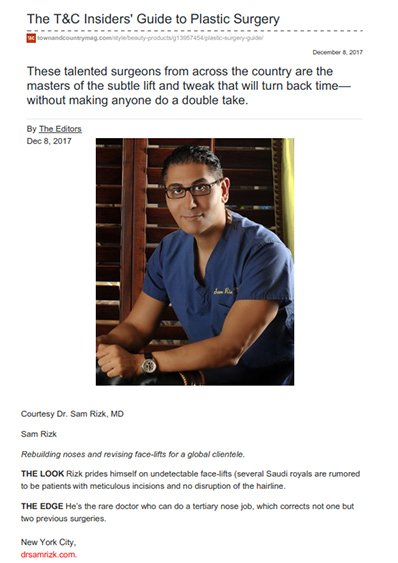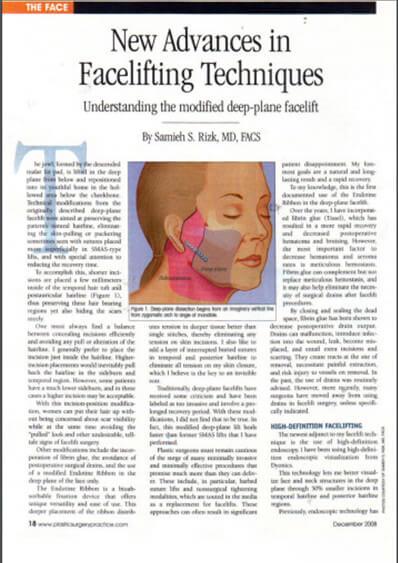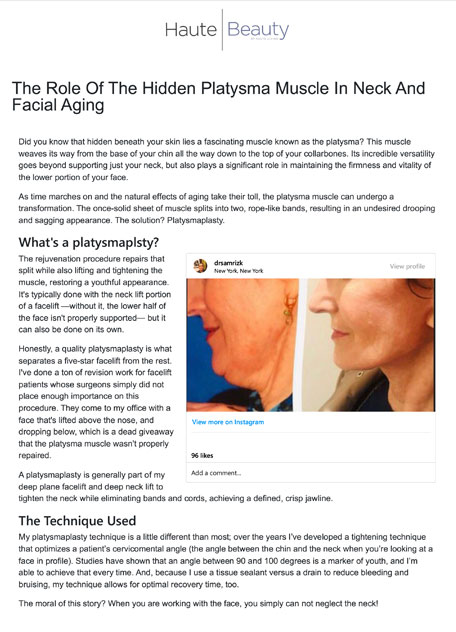Looking for a NYC Natural Facelift?
Wrinkles are a natural part of life, and even those who take great care of their skin can’t avoid them entirely. However, there are ways to reduce the appearance of aging. A facelift can help turn back time by addressing skin laxity, providing a rejuvenated and natural-looking result. By working with an expert facial plastic surgeon, you can achieve a long-lasting, youthful appearance. If you’re considering this procedure, it’s essential to find a surgeon who stays up-to-date with the latest techniques.
If you’re searching for a trusted facelift specialist known for surgical precision Dr. Sam Rizk is your best choice. With a double-board certification in facial plastic surgery, Dr. Rizk is renowned for his advanced facelift techniques that utilize minimal incisions for faster recovery and improved scar healing. He specializes in deep plane and extended deep plane facelifts, ensuring natural and long-lasting results. Additionally, he is a Sloan Kettering-trained head and neck surgeon, further demonstrating his expertise in facial anatomy and surgical precision. With Dr. Rizk, you’ll unlock your full potential in no time!
Meet Your Surgeon: Dr. Sam Rizk
Dr. Sam Rizk is a world-renowned double-board-certified surgeon specializing in facial plastic and reconstructive surgery. Recognized as a master of the facelift, Dr. Rizk has dedicated his career to delivering natural-looking, long-lasting results through the use of ARTISS tissue glue in combination with 3D high-definition technology.
Why Choose Dr. Rizk?
- Over 20 years of experience in sophisticated facelift techniques
- Thousands of satisfied patients with remarkable, natural results
- A collection of before and after images demonstrating his expertise
- Uses cutting-edge technology and the latest advancements in facial plastic surgery
- Recognized for pioneering innovative facelift techniques
- Skilled in working with patients of all ages and ethnicities
- A respected leader in the facial plastic surgery community
- Director of Manhattan Facial Plastic Surgery, PLLC
- Committed to giving back as a volunteer surgeon for the Little Baby Face Foundation
With a reputation for exceptional skill and artistry, Dr. Rizk is widely recognized throughout New York City and beyond for facelift procedures.
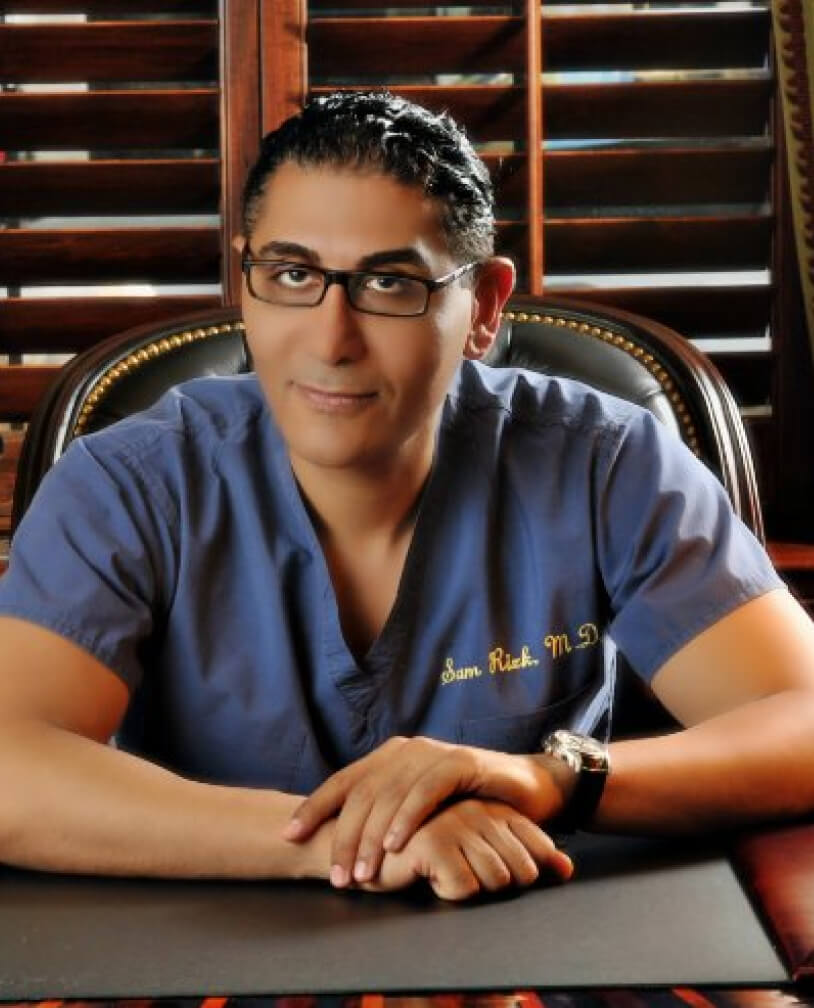
Facelift Before and After – Real Client Results
*Results may vary.
See More Real ResultsYour Guide to Facelifts
If you’re considering a facelift, this quick guide will give you an overview of the different procedures and what to expect before, during, and after surgery. Dr. Rizk and his team can answer all of your questions, helping you make an informed decision. Because a facelift is a significant step, it’s important to carefully discuss the process step by step so you can feel confident and at ease.
Mini Facelift vs. Regular Facelift
The main difference between a mini facelift and a regular (full) facelift is the degree of invasiveness.What Are The Different Types of Facelift Procedures?
Facelifts are can be categorized by the type of incisions, the depth of facelift, and the other characteristicsWho is a Candidate for a Facelift?
The ideal candidate is a patient with healthy living habits and realistic expectations, and concerns about skin laxity, sagging skin, and other visible signs of aging.What Are The Risks?
Risks are similar to that of other facial surgeries but can be minimized by choosing an experienced and reputable surgeon.Dr. Rizk’s Facelift Technique
Dr. Rizk personalizes the facelift needed to each patient. However, he always aims for a rapid recovery, with lasting and natural results.Book Your Facelift with Dr. Rizk
Be assured you will be in expert hands with double-board certified Dr. Rizk, who performs hundreds of facelifts.The Facelift Process Explained
Are you wondering what to expect during a facelift procedure? Here’s a breakdown of the process, from preparation to recovery. Keep in mind that every patient’s experience may differ, so be sure to talk to Dr. Rizk about what you can expect in your specific situation.Step 1 – Consultation
Every facelift procedure starts with a consultation where Dr. Rizk will ask you a series of questions to get to know you better and find out what you would like to achieve. You’ll discuss your main concerns, and any fears you might have, as well as what your various facelift options are. Your medical history and any current health issues will be covered as well. This is the perfect time to ask any questions you might have and have a heart-to-heart conversation with one of New York’s finest plastic surgeons. He has helped hundreds of patients and knows exactly how to help you too!
Step 2 – Designing Your New Look
The consultation is followed by a face examination and measurement which is plotted on a facial worksheet. Dr. Sam Rizk will also take photographs of the different angles of your face and make recommendations as to what the next steps will be. Digital imaging technology will help you see what the facial plastic surgery outcome will be. It’s all very exciting!
Step 3 – Preparing for Surgery
There are several things that you should do to prepare for your facelift surgery. Here is a non-exhaustive list that can act as a guideline. It is strongly suggested that you obtain instructions directly from Dr. Rizk
- Adjust your prescription medications: Be safe during the facelift procedure.
- Stop smoking: Nicotine interferes with healing.
- Over-the-counter medication is a no-go zone: Medications like anti-inflammatory drugs, herbal supplements, and aspirin will increase bleeding – to be avoided.
- You will ideally have support: Plan to have someone fetch you and take care of you and your house during the first few days after the operation.
- Pre-prepared frozen meals: You can either prepare and freeze your meals ahead of time or have a meal delivery service bring meals during your recovery time.
- Pain medication prescription: Fill the pain medication prescription that the plastic surgeon gave you before the surgery. Filling prescriptions post-surgery may be difficult.
- Drink plenty of water: Make it a habit to drink water in the time leading up to your surgery. You need to be hydrated to help assist the healing process.
- Clothing matters: Take clothing with you that will be easy to use and put on, e.g. buttons, zips, etc.
Step 4 – Procedure
Dr. Rizk lifts and moves the underlying soft tissue and muscles to their former position, seamlessly adjusting it over the face’s newly positioned contours, and removing any excess skin. This technique results in decreased bruising and swelling and also improves scar healing as a result of reduced tension on the outer layers of the skin. Dr. Rizk has performed this surgery countless times with impressive success. You have nothing to worry about.
Step 5 – Recovery
The period of recovery largely depends on the type of facial surgery technique used and your overall health. You can expect to have a swollen and bruised face for a few weeks and feel back to normal within two to four weeks, although it can take up to three months in some cases. You should be able to resume light activity within a few weeks as well. It is important to remember that before getting a facelift surgery, you need to start eating healthier and drinking more water to ensure you heal as quickly as possible. Talk with Dr. Rizk about how you can better prepare for a facelift recovery.
Invest in Your Confidence and Discover Facelift Costs in NYC
What Are the Different Types of Facelifts?
Full Facelift
A full facelift means that every part of the face that is showing advanced signs of aging will be lifted. This includes the eyes, brows, foreheads, jawline, and neck. Although Dr. Rizk employs the most sophisticated technique, this type of facelift involves more incisions than other facelift options and has a longer recovery time with more swelling. Some clients return to work after two weeks, while others may return after one week.
Mini Facelift
Usually performed on patients in their 40s and 50s, a mini facelift is a non-invasive procedure with less risk and downtime than a full facelift. It targets sagging cheeks and skin folds between the nose and mouth. Incisions are made in the mouth and hairline, followed by lifting and moving the layer of fat over the cheekbone. The procedure can also be performed through an incision in the lower eyelid or endoscopically. However, it does not create as dramatic a result as a full facelift. A mini facelift can be done as a standalone procedure or as part of a regular facelift, as both procedures target the same areas of the face.
Deep Plane Facelift
In a deep plane facelift, the surgeon accesses the facial muscles through incisions in the hairline at the temples, extending these incisions down in front of the ear (possibly into the creases) and continuing behind the earlobe to end in or near the lower scalp. This type of facelift provides more significant results than a traditional facelift but also requires a longer recovery period. However, Dr. Rizk minimizes recovery time and scarring by placing incisions in strategic locations.
Post-bariatric Facelift
Many people who have undergone extreme weight loss face the challenge of loose, excess skin in their facial and neck areas. Also known as a droopy face, this condition results in volume loss in the mid-face. Interestingly, the skin resembles thin, aging skin due to the loss of underlying fat. Dr. Rizk has extensive experience with this type of surgery. Most patients require increased cheek and neck tightening as well as deeper muscle and facial tissue elevation and repositioning.
Secondary Facelift
Not to be confused with a revision facelift, which corrects the results of an undesirable facelift, the secondary facelift is often performed more than 10 years after the initial facelift. As the aging process continues, a once rejuvenated face may require a refreshing update to readdress sagging skin and muscles that have once again responded to gravity.
Preservation Facelift
A preservation facelift protects the deeper layers of the face, promoting a refreshed appearance with less downtime. By focusing on essential tissues and muscles, it helps minimize swelling while supporting balanced, refined results. Dr. Rizk utilizes evidence-based methods to enhance facial contours and address sagging skin. This method encourages quicker recovery and a more natural look, helping patients feel confident and satisfied with their rejuvenated appearance.
Short Scar Facelift
Also known as a J-lift or limited incision facelift, the minimally invasive short scar facelift uses smaller incisions to tighten underlying facial muscles and remove excess skin. It is intended for those with moderate signs of aging in the lower face and can address sagging skin around the jowls for a firmer, more refined appearance. The short scar facelift also has a shorter recovery period than a traditional facelift.
Cutaneous Lift
Unlike other facelifts that lift, move, tighten, or reposition underlying muscles and tissues, the cutaneous lift is a skin-only lift. It does not touch or alter the underlying muscle or fat tissue. This procedure is ideal for those who have gained some skin laxity but still have a well-toned face with minimal fat loss, requiring only a slight tightening. The excess or loose skin is removed and repositioned to reveal lifted cheeks and jowls, along with a more defined jawline.
Mid-Face Lift
As the name suggests, the mid-face lift targets the middle of the face, focusing on hollow upper cheeks, eye bags, and downturned mouths caused by deep nasolabial folds and lines. An endoscopic camera is inserted through small incisions made around the hairline and ear to help elevate cheek fat pads and smooth and tighten the underlying facial muscles.
Revision Facelift
Undergoing a revision facelift can be a transformative solution if you have concerns from a previous facelift, whether those involve unsatisfactory results, complications, or visible signs of aging that continue over time. Because scar tissue is already present, revision procedures can be more complex, requiring a surgeon with specialized expertise. Dr. Rizk’s advanced training in revision facelifts allows him to address your concerns and refine your features for a fresh, harmonious look. Using Dr. Rizk’s signature technology like 3D high-definition modelling, you can finally achieve the natural, confident appearance you originally envisioned.
Facelift Scars:
During facelift procedures, the resulting facelift scars are generally placed in discreet areas along the hairline and around the ears, making them less noticeable to others. Dr. Rizk’s careful placement and expert closure methods help ensure that any scarring is kept minimal and heals well. Patients often find that scars fade significantly over time, allowing them to enjoy their improved facial contours without drawing attention to surgical lines. Proper aftercare and follow-up appointments are also essential for promoting healthy scar formation and overall satisfaction with facelift results.
Awards & Certifications
Benefits of a Facelift
It goes without saying that looking younger is, in and of itself, the chief benefit of having a rejuvenating facelift. However, it is not the only one. The upside of a more attractive and youthful appearance can positively affect self-confidence and, in turn, improve our lives.
The physical benefits of having a facelift include:
- Droopy or sagging skin is tightened and smoothed
- The underlying muscles and fat tissue that have moved downward over time are repositioned to their original place
- Jawlines become more defined
- Excess skin is removed
- Deep nasolabial lines are eliminated
- Double chins disappear
- The entire eye area is rejuvenated with several separate procedures
It is so important to feel good about ourselves, both emotionally and physically. The two go hand in hand: look good, feel good! If you believe a facelift can help boost your self-confidence, Dr. Rizk and his staff are here to help.
Dr Rizk In The Media
Understanding Facelift Risks and Potential Side Effects
There are a few risk factors ⁵ that you should be aware of when opting for any facelift procedure. You are safe with Dr. Rizk. He and his staff use the strictest hygiene protocols, and he has performed successful facelift surgeries countless times. However, we believe it is right to educate our potential patients on the risks that come with any surgery, including facelift surgery. These include:
- Scarring: Although scars will lighten over time, well-placed incisions result in minimal visible scarring.
- Hair loss: Patients might experience that hair growth patterns do not return to normal after a facelift due to the incisions made within the hairline. They might also experience hair loss due to stress affecting the hair follicles.
- Skin loss: 2 – 3% of facelifts result in reduced or minimal blood flow to certain parts of the face, which can lead to skin necrosis. This is of most concern for smokers as nicotine can hinder the healing process.
- Infection/Inflammation: Should you notice a spot that seems to be a little bit warmer than it should, or looks like there could be inflammation, call your doctor. It might be an infection that could require antibiotics. This is a serious risk and must not be ignored at any cost.
- Excessive bleeding: Although it is normal to experience minor bleeding in the first few days after surgery, excessive bleeding is not normal. You should contact your doctor immediately, as they will want to address this as soon as possible. Again, it bears repeating—this is a dangerous situation. Call your doctor if this happens.
- Reaction to anesthesia: Some people feel nauseous and vomit when they receive anesthesia. This is not life-threatening and does not last long, but it is important to be aware of this possibility.
Who Can Benefit from a Facelift?
Frequently Asked Questions
What is the ideal age for a facelift?
The perfect age for a facelift is when the signs of aging start to become more apparent, which is usually when people are in their 40s, 50s, and 60s.
What a facelift is not
Although a facelift will do wonders for naturally improving the youthful appearance of your face, it is not a procedure aimed at improving skin quality and does not stop the aging process.
How painful is a facelift?
There is not much pain after the operation, and any discomfort will last for about 2 – 4 days. You might experience shooting pains around the numb incision areas as the feeling returns.
How long will a facelift last?
Facelifts last for about 10 years, as the natural process of aging cannot be stopped.
How much younger can a facelift make me look?
Studies show that, on average, a facelift can make someone look 12 years younger than their current age.

By Dr. Sam S. Rizk, M.D., FACS.
Dr. Rizk is a double-board-certified facial plastic surgeon who specializes in rhinoplasty surgery and is a recognized expert on the latest advances in facial plastic surgery techniques. He performs a range of facial plastic surgeries at his New York practice.

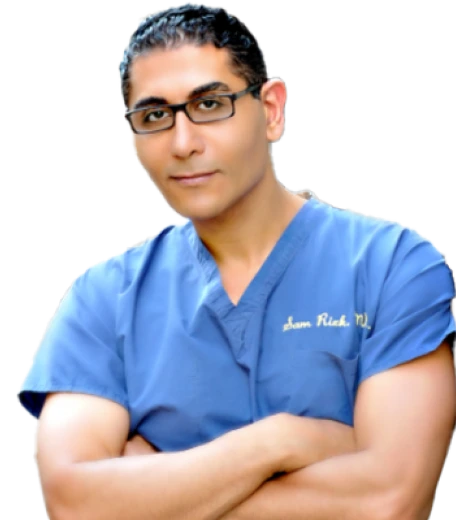

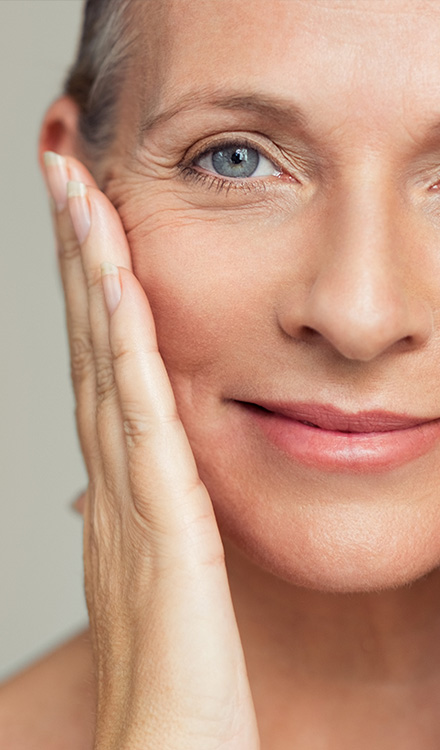
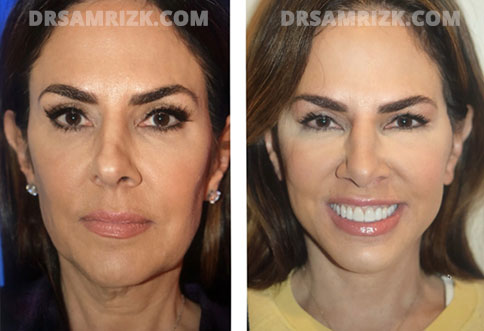
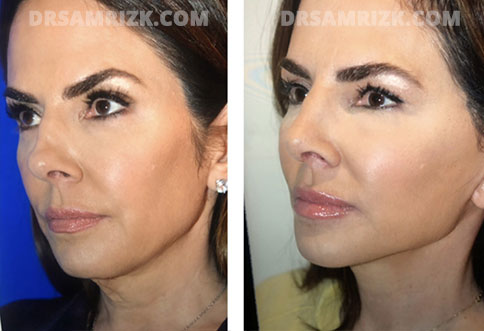
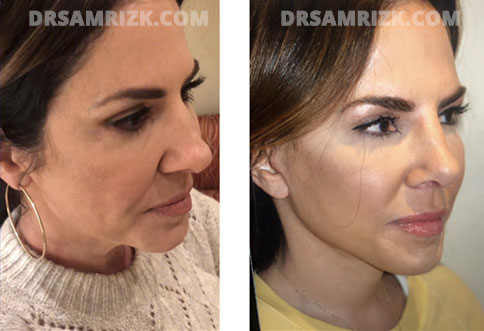

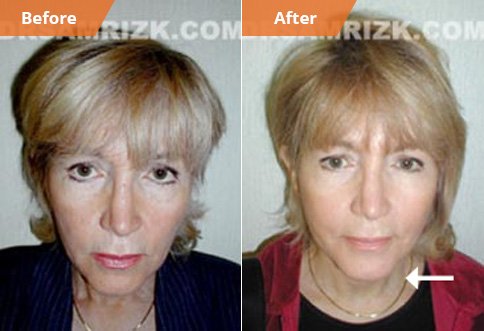

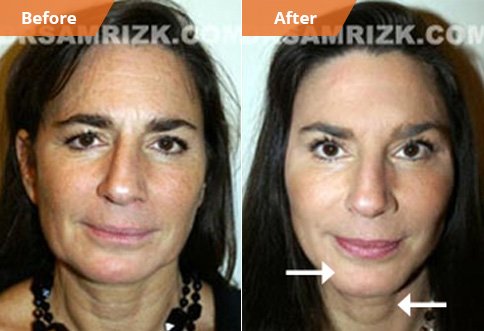
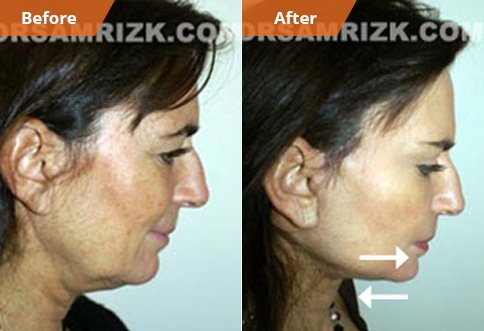
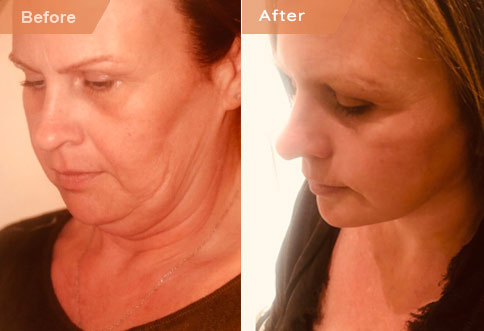
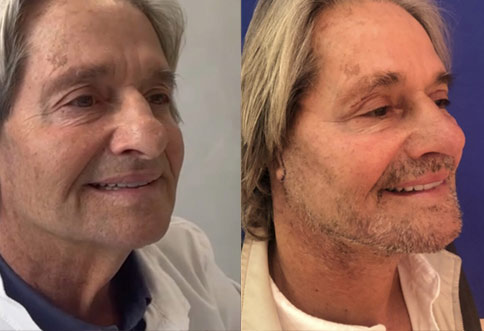
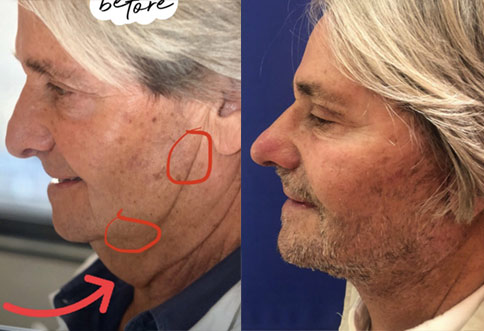
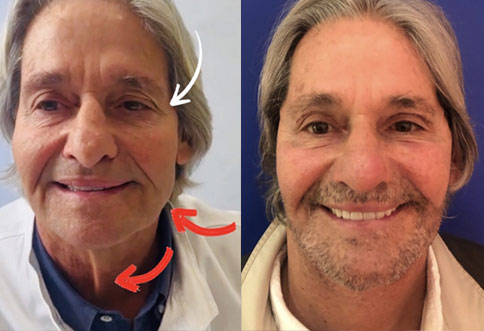
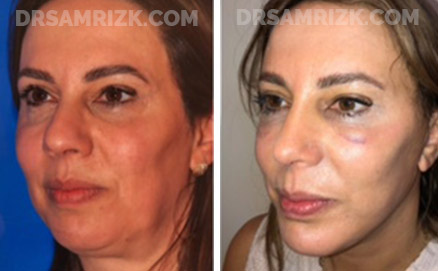


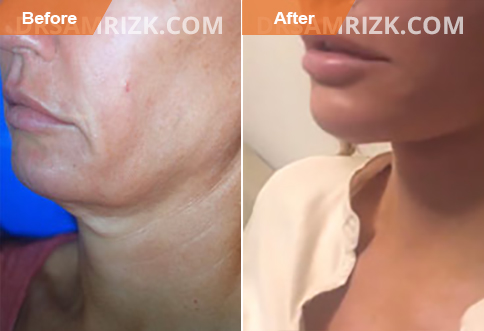
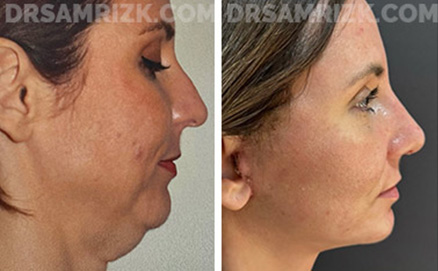
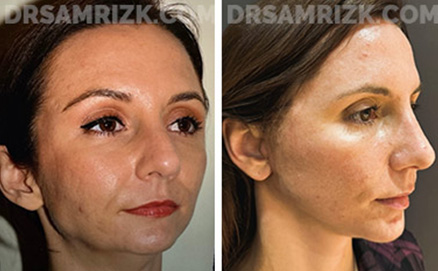

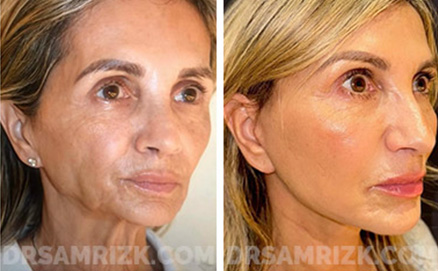
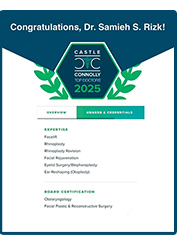
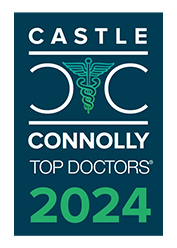

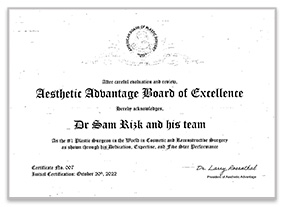
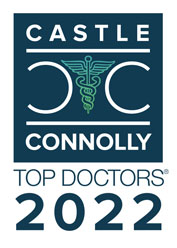
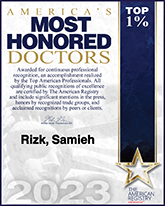
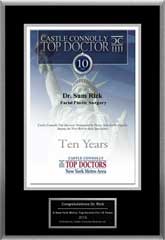
2.jpg)
